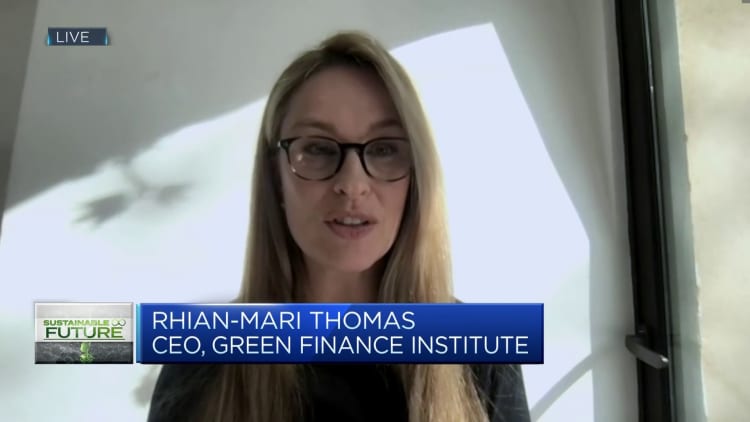
The BlackRock logo is seen outside of its offices in New York City.
Brendan McDermid | Reuters
BlackRock estimates that the world’s green energy transition will require $4 trillion annually by the mid-2030s, calling for more public-private partnerships, especially in Asia-Pacific.
The forecast comes from BlackRock’s latest “Investment Institute Transition Scenario,” which analyzes how the low-carbon transition is most likely to play out and its potential impact on portfolios.
The $4 trillion figure is double previous expectations of $2 trillion annually, and will require increases in both public and private sector capital, according to Michael Dennis, head of APAC Alternatives Strategy & Capital Markets at BlackRock.
“APAC is really at the center of the energy investment opportunity, and we see this in multiple areas, both in developed markets and emerging markets,” said Dennis, speaking at Singapore’s annual Ecosperity Week last week.
Is the capital out there?
Last year, $1.8 trillion was invested into projects related to the energy transition, up from $33 billion in 2004 with about $19 trillion invested to date, according to data compiled by BlackRock.
“That rate of growth and the amount of capital being invested is in the right direction,” said Dennis, who is responsible for BlackRock’s alternatives business in the region, including across infrastructure, hedge funds and private equity.
“However, while the investment has grown, there’s still an $18 trillion gap to get to where we need to by 2030,” he added.
The capital gap exists across different risk classes: from low risk investments in core energy infrastructure, to higher risk endeavors like late stage venture capital and private equity.

According to Dennis, the funds to meet this gap are out there.
A BlackRock survey of 200 institutional investors last year found that 56% plan to increase transition allocations in the next 1 to 3 years, with 46% saying that navigating the transition is their most important investment priority in the same period of time.
However, making investments come to life in private and public markets will require “alignment between government action, companies and partnerships with communities,” said Dennis.
In terms of public policy, legislation like the Inflation Reduction Act, signed in August 2022 in the U.S., have been able to galvanize billions in public funds to be put toward greenhouse reduction projects.

“Beyond that, we need to see policy change around energy pricing and deregulation of energy markets,” said Dennis, adding that in emerging markets, around 60% of needed capital is expected to come from the private sector.
BlackRock identifies blended finance as another key investment driver, particularly among emerging markets. Blended finance is defined as the strategic use of development funds to mobilize additional finance toward sustainable development, according to the OECD.
“Blended finance is really critical, not only for the early stage of projects, but for making [green] assets investable within current portfolio structures,” said Dennis, adding it can help tap trillions in funds from broader capital markets.
Other factors that are needed to reach the world’s green financing goals include developing better talent across different areas of the ecosystem and the shifting of risk frameworks for green project investments, according to BlackRock.
